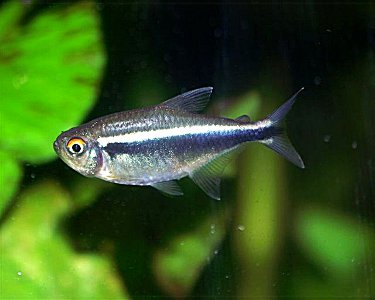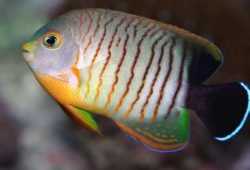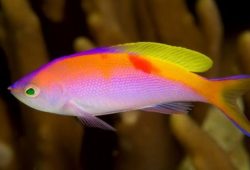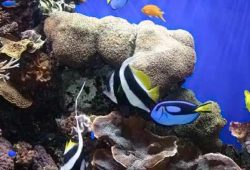How to breed Black neon tetras
The purpose of the article is to give you some information on How to breed Black neon tetras. You can’t escape Neon tetras, Paracheirodon innesi, which are found with ease in many shops and sold in large numbers. But I am also sure that if you looked in that same shop, you would find another small characin that shines just as bright and has the word “neon” as part of its common name – and yet is in no way related.

This fish is the Black Neon tetra, Hyphessobrycon herbertaxelrodi, an attractive little fish well suited for a community tank with fish of its size and temperament.
Although it is native to the Matto Grosso in Brazil, and hence used to soft, acidic water, chances are the fish you see in the dealer’s tanks have been bred commercially and are not demanding of such softwater. It is also a fish that is remarkably resilient to different water conditions.
When it comes to breeding, it is best to lean to the soft side and aim for a pH of no higher than 7.2 and a maximum hardness of 6°GH. Ignore literature that states that the Black Neon is not easy to breed. I have never found this to be the case.
I tend to buy six or seven young fish at a time to grow them on for breeding, but if you see a group of young adults and can sex them, it is possible to buy just one pair.
Males are very slim while the female has a more rotund shape. If she is in breeding condition, the belly region will be quite plump, a sure sign that she is carrying eggs. There is no colour difference in either sex.
Setting up the tank
I use the bare tank method, so there is no substrate. Each pair of Black Neons is put into a 38 x 20 x 30cm/15″ x 8″ x 12″ tank. You can use any size tank within this range, but I would not go above 60cm/24″.
Thoroughly clean the tank before use. I use a salt solution (not table salt) as a mild disinfectant. I then fill with tapwater to about 18cm/7″ deep. Dechlorinate the water and keep temperatures to between 24C and 26C (75-78F).
Place two nylon wool spawning mops on the bottom of the tank, with another one suspended on a strip of polystyrene above them. People who visit me are surprised that I don’t cover the whole tank bottom with mops for the eggs, but you only need two or three.
I have also found that with fish such as tetras, when they are spawning they will not touch the eggs. The trouble seems to come when they have finished spawning, for they then start to hunt for the eggs and eat them.
Dark is good…
When I was in Singapore visiting the fish farms, I saw Black Neon tetras being bred in total darkness. Since then I’ve spawned several species of small tetras using a similar method by covering the tank with towels or newspapers. Now while this does not give total darkness, the fish are in a very subdued light.
I have seen the male in his best breeding colours “dancing” around the female, trying to entice her into the spawning mops.
After a short while, the pair appear to brush together and the female responds by scattering a few very tiny, clear, semi-adhesive eggs that are instantly fertilised by the male. This process is repeated with the fish swimming in and out of the mops.
When finished, the now visibly thinner female takes cover in the mops, hiding from the still driving male. This is a good time to remove the pair, otherwise they will both eat the eggs if given the chance.
Although their eggs are not as light sensitive as many other characins, I still keep the tank covered until they hatch. I now fit a small sponge type filter to the airline.
Care for the fry
The eggs will hatch within 24 hours – if you carefully lift one of the mops, very tiny clear objects can be seen wriggling on the bottom of the tank.
Replace the cover and leave them until they are free swimming. Do not feed them as they are feeding off their yolk sac. Within five days they become free swimming and now need to be fed a minute-sized food. I use my own cultured infusoria.
For a brood of about 100 to 200, I place a 200ml jar of infusoria into the tank which sustains them until they can take larger foods. Within about a week, the fry are able to take live Brineshrimp nauplii. For variety, I feed brineshrimp in the morning and microworm in the evening.
Quarter water changes are made weekly. When the fry reach about 3mm, they are moved to a larger tank.
A brood of about 200 fry need to be kept in a 90cm/3′ tank or two 60cm/2′ tanks. Their diet can be enhanced with dry foods. Within 12 weeks, you should be able move them onto friends or your local dealer.
This article was first published in the February 2004 issue of Practical Fishkeeping magazine.



